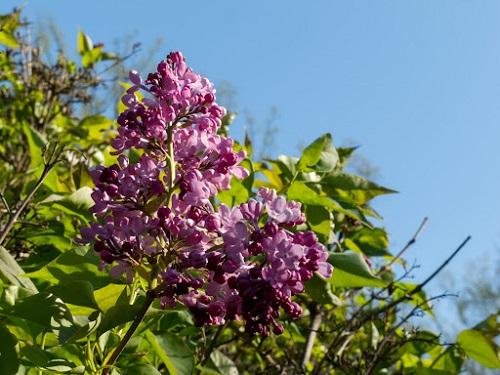Key points
- Japanese maple scale (Lopholeucaspis japonica) is a non-native type of armored scale insect that can be difficult to manage. Their waxy body covering shields them from predators and certain pesticides. Learn more about scale insect groups and biology in Introduction to Scale Insects.
- This is a pest of a very broad range of trees and shrubs and can cause plant decline, dieback, or death when populations are high.
- Target monitoring and control efforts to the vulnerable crawler stage. Learn more about what to look for in Monitoring for Scale.
Appearance
- Mature female covers are oystershell-shaped, dark brown with a thin white coating, and less than ⅛” (3 mm) in length.
- Male covers are similar and smaller.
- Crawlers are purplish.

Magnification helps to detect scale that are wedged into bark cracks
Photo: John .A. Davidson, Univ. Md, College Pk, Bugwood.org
Common host plants
Dozens of species in over 27 plant families are used by this species. This is not an exhaustive list.
- larger-statured trees, including maple (Acer), elm (Ulmus), zelkova (Zelkova), birch (Betula), honeylocust (Gleditsia),beech (Fagus), chestnut (Castanea), sweetgum (Liquidambar), tulip poplar (Liriodendron), magnolia (Magnolia), willow (Salix), and linden (Tilia)
- smaller-statured trees, including serviceberry (Amelanchier), redbud (Cercis), crabapple (Malus), hornbeam (Carpinus), dogwood (Cornus), hawthorn (Crataegus), silverbell (Halesia), snowbell (Styrax), stewartia (Stewartia)
- broadleaf evergreens, including holly (Ilex), boxwood (Buxus), privet (Ligustrum; invasive), Japanese euonymus (Euonymus japonicus), firethorn (Pyracantha), and camellia (Camellia)
- deciduous shrubs and vines, including chokeberry (Aronia), cotoneaster (Cotoneaster), lilac (Syringa), flowering quince (Chaenomeles), panicle Hydrangea (Hydrangea paniculata), Smokebush (Cotinus coggygria), and Wisteria (Wisteria)
- fruit trees and shrubs, including apple (Malus), Pear (Pyrus), Persimmon (Diospyros), Jujube (Ziziphus), Quince (Cydonia and Pseudocydonia), and Fig (Ficus)
Where to look
- Mature females and immature males will be found on the bark of branches of all sizes.
- Light infestations often start in the bark cracks and rough areas of the trunk and branches.








